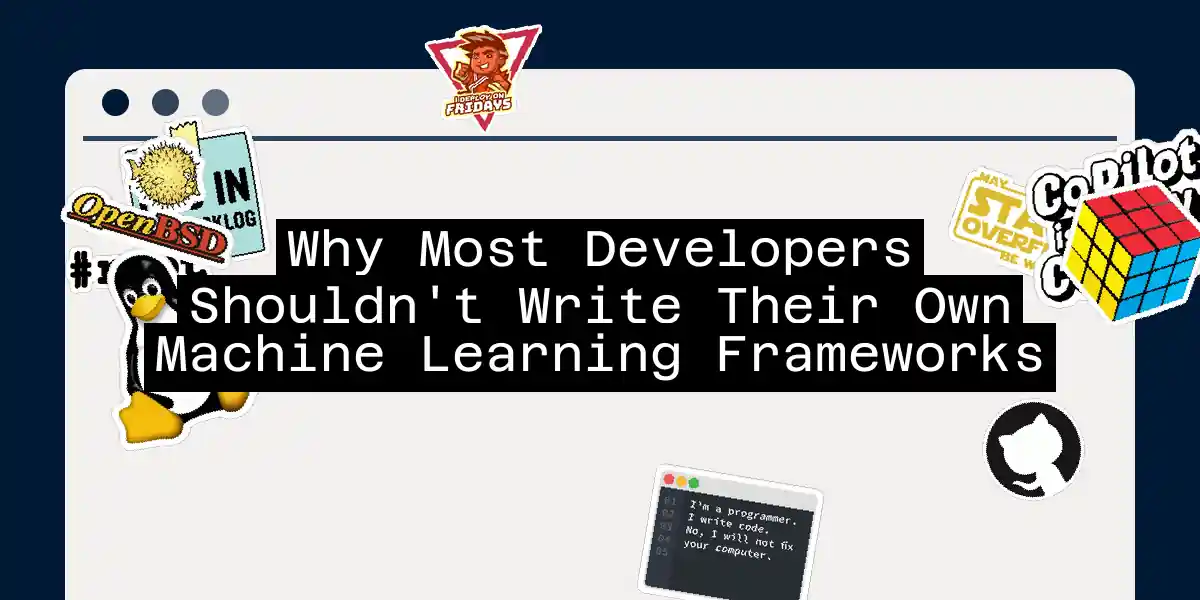The Allure and the Pitfalls of Custom Machine Learning Frameworks
Machine learning (ML) has become the holy grail of modern software development, promising to revolutionize everything from chatbots to self-driving cars. However, the journey to ML nirvana is often fraught with challenges, especially when developers decide to write their own ML frameworks from scratch. In this article, we’ll delve into why this approach is usually a recipe for disaster and why leveraging existing frameworks is the smarter, more practical choice.
The Complexity of Machine Learning
Machine learning is not just about coding; it’s a complex interplay of mathematics, statistics, and computational power. For a software engineer, diving into ML without the requisite mathematical background can be akin to navigating a minefield blindfolded.
The Time and Effort Conundrum
Developing a custom ML framework requires a significant investment of time and effort. This is time that could be better spent on the core business logic of your application or on integrating proven ML solutions. The development time for a custom framework can be staggering, and the maintenance costs are often prohibitive.
The Importance of Specialization
Machine learning is a specialized field that requires deep expertise in areas such as linear algebra, probability, and calculus. While it’s possible for a software engineer to learn these concepts, it’s often more efficient to leverage the work of experts who have dedicated their careers to ML research and development.
The Role of Frameworks in ML Development
Frameworks like TensorFlow, PyTorch, and scikit-learn provide a structured approach to ML development. They offer pre-built components, extensive documentation, and community support, which are invaluable resources for developers.
Avoiding the Not-Invented-Here Syndrome
The “not-invented-here” syndrome is a common pitfall where developers prefer to build everything from scratch, even when better solutions already exist. This approach can lead to wasted resources, duplicated effort, and suboptimal results.
Learning from Others
Using existing frameworks doesn’t mean you’re not learning or contributing. On the contrary, understanding how these frameworks work can enhance your skills and provide insights into best practices. It’s about striking a balance between using tools effectively and knowing what’s happening under the hood.
Conclusion
Writing your own ML framework from scratch is a daunting task that few developers should undertake. The complexity of ML, the time and effort required, and the importance of specialization all argue in favor of leveraging existing frameworks. By doing so, you can focus on what truly matters—building innovative applications that solve real-world problems.
So, the next time you’re tempted to roll out your own ML framework, remember: there’s no need to reinvent the wheel. Instead, use the tools that have been perfected by others and save your energy for the creative and innovative aspects of software development. After all, as the saying goes, “standing on the shoulders of giants” is often the best way to reach new heights.
